Through the year with Schütz (II)
Works for Passiontide and Easter
On 6 November 1672 (according to the Julian calendar, or 16 November in our present-day Gregorian calendar) Heinrich Schütz, Kapellmeister to the electoral court in Dresden, died there at a great age. The 350th anniversary of his death in 2022 gives us the opportunity to remember one of the most important and pioneering composers in our history of music. Heinrich Schütz’s wide-ranging output allows us to accompany him through the year in almost every combination of vocal music (almost all of his surviving works are vocal), and to commemorate him throughout the whole year with music appropriate to the season.
Passiontide
‘Historia’ compositions by Schütz survive not only for Christmas, but also for Passiontide and Easter. These include the three Passions SWV 479, 480, and 481; except for the Introitus and Conclusio, these use exclusively biblical texts. Unlike the other ‘Historiae’ the Passions do not use any instruments: there is just solo unaccompanied singing (notated without rhythm) and four-part turba choruses. Even with these reduced means, these are impressive pieces which get under your skin, but nevertheless present an enormous challenge for singers, both vocally and in intonation (three quarters of an hour nonstop unaccompanied singing!).
Closer to our usual listening and performing practices is the setting of the Sieben Worte Jesu Christi am Kreuz (Seven Last Words from the Cross) SWV 478, probably composed as non-liturgical devotional music. Framed by two motet-like choral settings and two five-part Symphoniae, the seven words of Jesus are sung by a tenor and two treble instruments with basso continuo; the linking Evangelist’s parts are sung by different voices, and sometimes also by the chorus. A good 10 minutes of varied music which is reasonably straightforward to perform (with the two Symphoniae it is perfectly possible to omit the middle parts and to have these played only by instruments which are in any case required elsewhere).
The Cantiones sacrae of 1625 are always overshadowed by the Geistliche Chor-Music, but quite unjustly! The Cantiones sacrae contain beautiful pieces for Passiontide, including a cycle of five motets for Passion (which can naturally be performed individually). The writing is more relaxed than in most of the motets in the Geistliche Chor-Music, more suitable for ensemble than large choir, but of tremendous intensity and harmonic richness. A really worthwhile challenge for chamber choirs.
Of the psalms designated for worship at Passiontide, Schütz set Psalm 111 Ich danke dem Herrn von ganzen Herzen (I worship the Lord with all my Spirit) (Maundy Thursday) several times. At first glance in a Corona year, the four choir composition from the Psalmen Davids (SWV 34) seems almost out of the question. But Schütz himself indicated that two of the four choirs could be omitted, and for the two remaining choirs an instrumental-vocal performance suggests itself (but in the two choirs at least one part must be sung!); the Doxology based on Gabrieli should be omitted during Passiontide. Alternatively, one can always fall back on Schütz’s Becker-Psalter: Ich will von Herzen danken SWV 209 (the second psalm in this edition, Psalm 118, is designated for Easter). As explained in the first part of our short series, these psalms offer many performance options – from voices with basso continuo to large-scale scorings with choir and instruments, depending on the resources available.
Heinrich Schütz
The Seven Last Words from the Cross SWV 478
Carus 20.478
Cantiones Sacrae
- Schütz Complete Edition, Vol. 5:
Carus 20.905 - Schütz Complete recording, Vol. 5:
Carus 83.252
Annunciation of the Virgin Mary
The Feast of the Annunciation of the Virgin Mary falls during Passiontide (25 March). For this Schütz composed an exceptionally delightful dialog composition: Sei gegrüßet, Maria (The Annunciation) SWV 333 (or in Latin Ave Maria gratia plena SWV 334). Werner Breig has already discussed in a CARUS blog the special characteristics of this dialog between the angel and Mary, who at first does now know what has happened to her.
The Annunciation SWV 333
Carus 20.333
Easter
There is also a Historia for Easter by Schütz, the Historia der Auferstehung Jesu Christi (Account of the Resurrection of Jesus Christ) SWV 50. In this remarkable composition Schütz combined the traditional, unmeasured recitation of the Gospel with the then modern basso continuo and an accompaniment of held notes by a gamba ensemble; only at the cadences do they play together in the same rhythm. By contrast, the soliloquies are set as little concerti with basso continuo, which anticipate the style of the Kleine geistliche Konzerte in a highly modern way. The chorus only appears at the beginning and end with two motet-like movements, and in one turba chorus. With a duration of around 45 minutes and a large number of small solo parts (SSSAATTBarB) there is a risk that this composition will not often be heard in 2022. Despite that, whenever possible it is highly recommended!
Easier to perform is the “little brother” of the Auferstehungshistorie: the Osterdialog (Easter dialog) “Weib, was weinest du” SWV 443. This is limited to the dialog between Mary Magdalene and the risen Jesus in the guise of a gardener (also present in the Resurrection History). A short composition for 2 sopranos (Mary) and 2 tenors (Jesus) and continuo (approx. 4 minutes). It is fantastic how Schütz set to music the talking at cross purposes of Jesus, radiating calm, and the agitated “chattering” Mary, as well as the complete volte-face at the direct utterance of “Maria” and the recognition “Rabuni”!
If I were asked the famous question of what I would have to take with me to that desert island, this composition would be right at the top of the list for me!
This piece also has a final chorus, which is lost apart from the basso continuo. Our new edition offers a reconstruction of this final chorus for the voices involved (SSTT), but which is also suitable for SATB chorus.
For Easter the range of compositions is large – up to the radiant Surrexit pastor bonus SWV 469 “à 11 vel si placet à 19”. Many of the other works for Easter are also scored for large forces, in keeping with this festive occasion. The Geistliche Chor-Music includes the Easter motet Ich weiß, daß mein Erlöser lebt (I know that my Redeemer lives) SWV 393 for a large-scale group (7 parts plus basso continuo). The six-part motet Die Himmel erzählen die Ehre Gottes SWV 386 (Ps. 19) is also suitable for Easter. A version of this motet which survives in manuscript (SWV 455) contains specific performance instructions. There, Schütz distinguishes between a group of soloists (in addition “to each voice a lovely instrument such as violas”) and a Cappella (“with wind instruments, strongly scored”). The markings “solus” and “omnes” can also be found in the printed version. This once again shows that the motets in Geistliche Chor-Music are intended for more varied ways of performance than is usual nowadays. A mixed vocal-instrumental performance (see the first section of the blog) is of course possible for both motets.
Psalm 19 is also found in the Becker Psalter as Die Himmel, Herr, preisen sehr SWV 115, as is the previously-mentioned psalm for Easter, Psalm 118 Lasst uns Gott den Herren SWV 216. Both can again serve as the basis for varied interpretations – or even performance by small-scale forces.
Account of the Resurrection of Jesus Christ SWV 50
- Full score: Carus 20.050
- Complete Edition: Carus 20.904
Osterdialog “Weib, was weinest du” SWV 443
- Full score: Carus 20.443
- Choral score: Carus 20.443/06
- Individual Part (Basso continuo): Carus 20.443/11
As a musicologist, Dr. Uwe Wolf is particularly at home in the 17th and 18th centuries. The focus of his work ranges from the time of Monteverdi and Schütz to Bach and the generation of Bach’s sons and pupils through to Viennese Classicism. He has been head of the editorial department at Carus-Verlag since October 2011. Prior to this, he worked in Bach research for over 20 years.

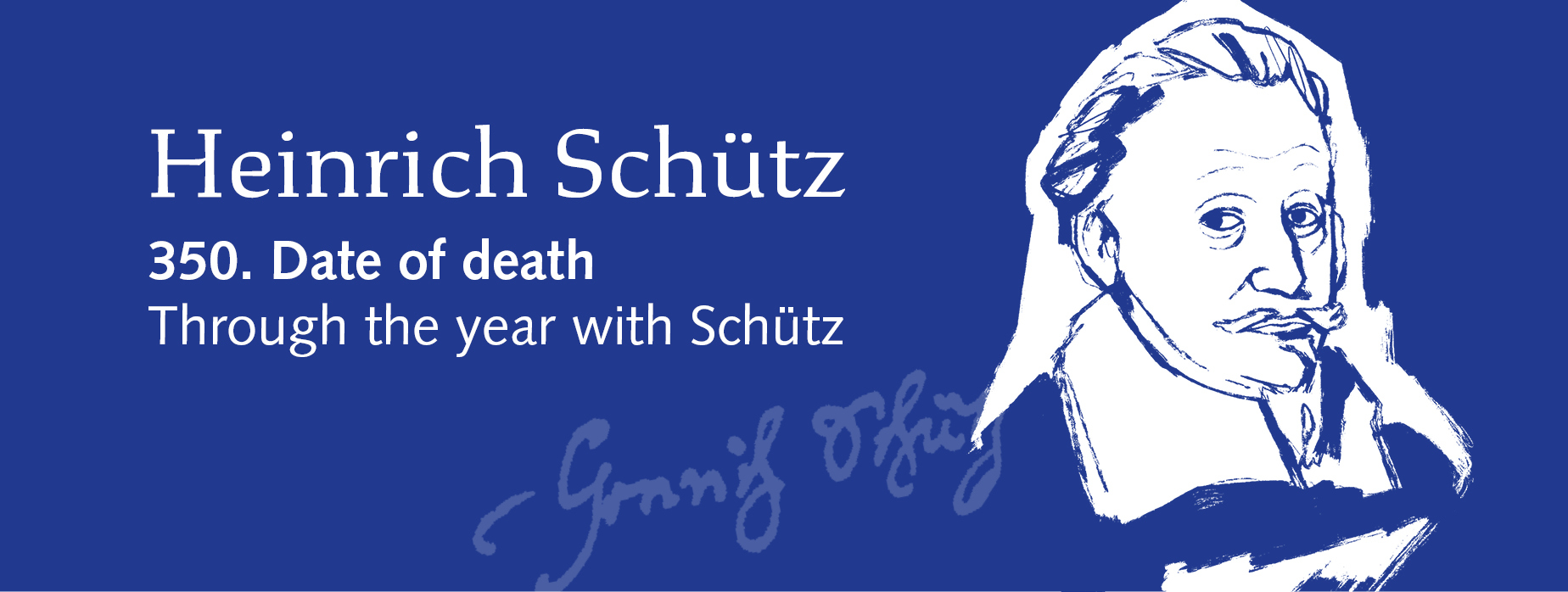
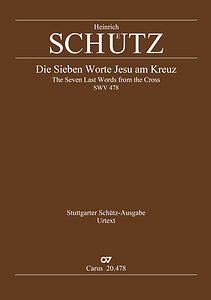

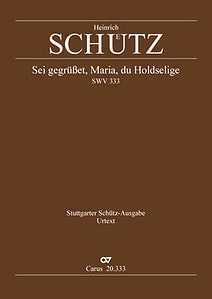
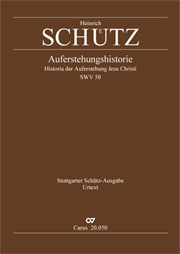

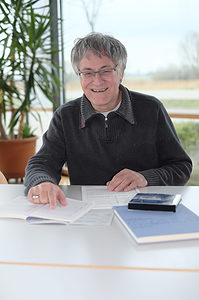

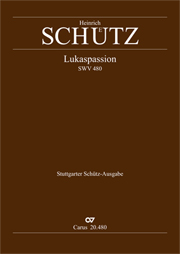

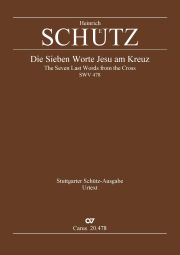
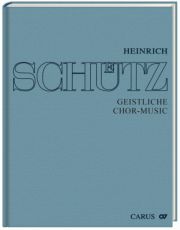

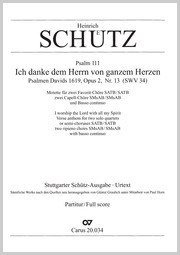
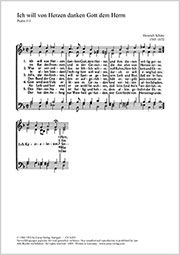

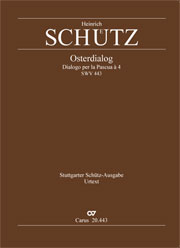
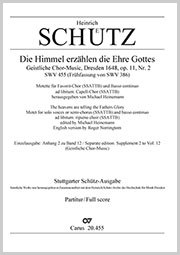
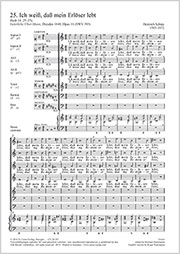
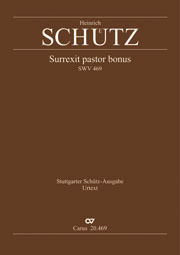
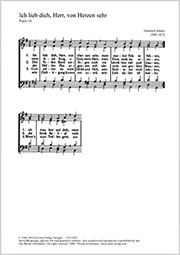


Leave a Reply
Want to join the discussion?Feel free to contribute!